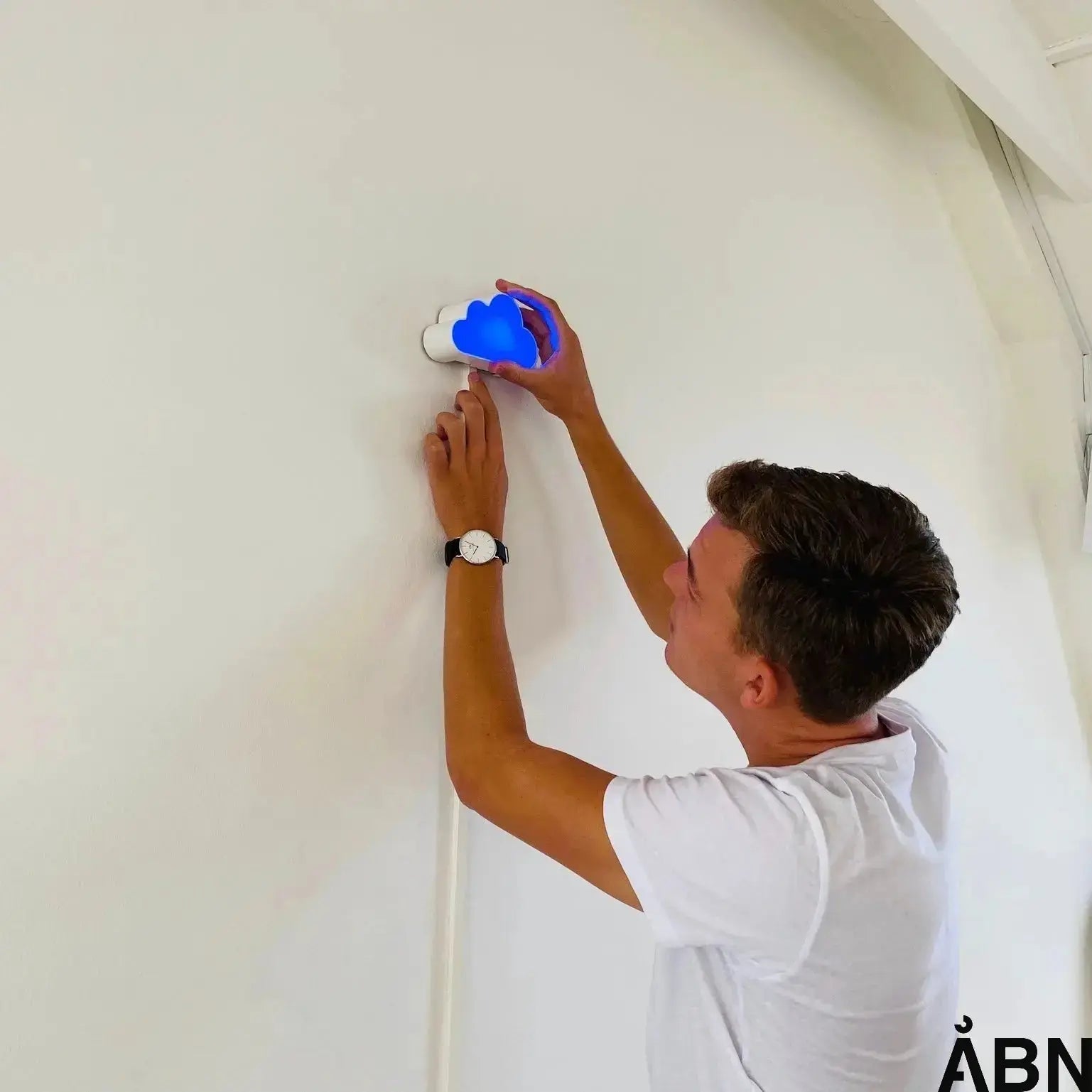Hvornår skal man lufte ud?
Når SKYEN lyser rødt, er CO2-niveauet steget over 1.000 ppm (parts per million). Dette er ikke et faretruende højt niveau, så du behøver ikke at betragte det som en alarm, men mere som en venlig påmindelse. Det anbefales dog at lufte ud inden for de næste 30 minutter for at forbedre indeklimaet.
Mange tror fejlagtigt, at det er bedst at lufte ud, når man ankommer om morgenen på arbejdspladsen. Dette er faktisk modsat af, hvad der gælder i private hjem.
Office buildings have often been empty all night, and have therefore ventilated themselves through small cracks and openings in the building. The first ventilation is therefore most necessary when the CO2 level has increased after a few hours of work.
Tip: Take advantage of natural breaks to ventilate:
-
During the coffee break - get some fresh air while brewing a fresh cup of coffee. Get the whole office involved - the best conversations start over the coffee machine, as you know.
-
In connection with meeting breaks - use the SKY for a natural break. Why continue while the indoor climate is quietly but surely deteriorating your cognitive abilities?
-
During your lunch break - the air gets fresh while you eat
-
Between intense work periods - a short break can increase productivity
-
When you need to print or retrieve something - combine movement with ventilation
Rules to remember about indoor climate and health:
Research shows clear links between indoor climate and cognitive abilities. A Harvard study showed that cognitive abilities decreased by up to 50% when CO2 levels rose to 1,400 ppm compared to 600 ppm. The ability to make strategic decisions and plan ahead is particularly affected.
At CO2 levels above 1,000 ppm, the following problems may occur:
-
Reduced ability to concentrate (up to 23% reduction)
-
Slower reaction time (15-20% increase)
-
Increased fatigue and headaches (reported by 30% more employees)
-
Lower productivity (average 10-15% decrease)
How do you properly ventilate?
Openings and drafts:
A single opening provides slow ventilation, as the air must both enter and exit at the same point. Two or more openings create a through draft, which is much more effective. Opening windows on opposite sides of the room achieves the best air circulation, as the air pressure is equalized across the room.
Example 1: Ventilation with only one opening
When you ventilate with only one opening, a window or a door, the wind trying to enter the room will create a natural overpressure and therefore will not reach very far into the room before the overpressure pushes the fresh air out again.
This is best illustrated by the feeling of inflating a well-filled beach ball with more air.

Example 2: Ventilation with two or more openings
When you ventilate with 2 or more openings, windows or doors, the air will have free passage through the room. There will be no overpressure in the room, as the air can freely escape out the opposite window.
To use the previous example with the beach ball, this can be illustrated by sticking a knife into the opposite end than the one you are breathing into. Now it is much easier to get air to run through the ball. 
Times when venting with an opening is best
No ventilation rules without exceptions. For this through-draft model is most optimal when the air comes in from one opening, comes from outside and is fresh. You may therefore experience that the indoor climate continues to be poor and the SKY continues to be red. This may be because the air you draw in may come from common rooms and other offices where the indoor climate is just as bad, if not worse than in your room. In addition, it may be a good idea to simply open the windows and doors that open to fresh air.
A good rule of thumb is to invest in a SKYEN unit in every room so you can monitor the airflow and quality of the indoor climate. This way, you can set a rule of thumb never to ventilate by opening up to a room with a red SKYEN unless that room has a window that can be opened to fresh air so you can create a draft through both rooms.
Take advantage of the "chimney effect"
If the building has skylights or windows at different heights, take advantage of this. Warm air rises, so by opening windows both high and low in the room, a natural draft is created, with the warm air escaping through the upper openings while fresh air enters through the lower ones.

Avoid ajar windows
It is a common misconception that it is best to keep windows ajar all day. This leads to unnecessary energy loss without effective ventilation. Instead, you should ventilate with the greatest possible draft for the shortest possible time - until the SKY turns blue again.
Make it a competition
The goal of the draft is to do it as quickly and "strongly" as possible to avoid heat loss in the building. Measure how quickly you can get the SKY to change from red to blue. This creates awareness about ventilation and makes it a shared activity that can be fun and motivating.
Seasonal differences
In winter, ventilation is actually more effective than in summer due to the greater temperature difference between inside and outside. The warm air inside will flow out faster and be replaced by cold air from outside, creating a stronger chimney effect. In summer, when the temperature difference is smaller, it may be necessary to ventilate for a slightly longer period or create artificial drafts on days when the wind is not blowing.
Save energy
Turn off radiators and other heat sources while you air out. This significantly reduces energy waste, as heat sources will otherwise work extra hard to compensate for the cold air. Remember to turn the heat back on at the same level after airing out.
If you experience the need for frequent ventilation despite the fact that the building has mechanical ventilation, it may be a sign that the ventilation system is not functioning optimally. In this case, contact the nearest service manager to check whether the system is correctly set or whether it is clogged.
By following these guidelines, you can achieve a healthier indoor climate with optimal energy utilization, which benefits both employee well-being, productivity and the company's energy bill.
Download our free venting guide
Would you like to share these good recommendations with your colleagues? In addition to sharing this article, you are of course very welcome to download and print our ventilation guide for the office. Print it out and hang it near the SKY so that you can all work together to create a better indoor climate.









